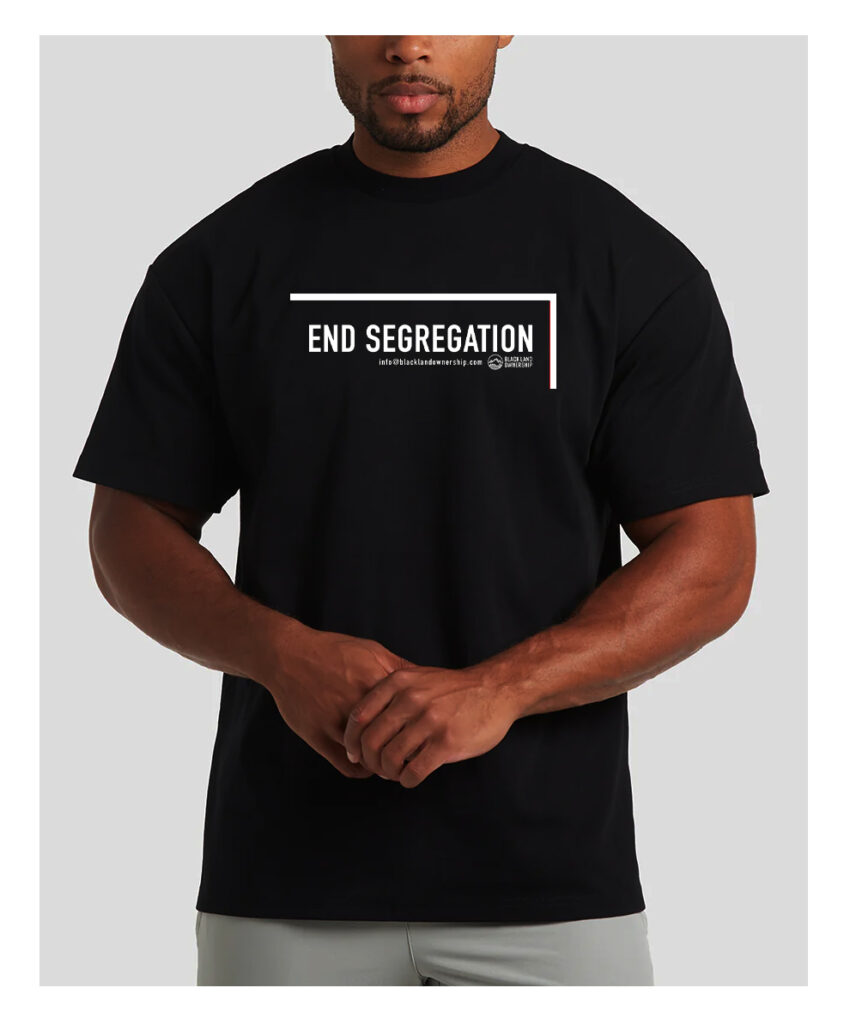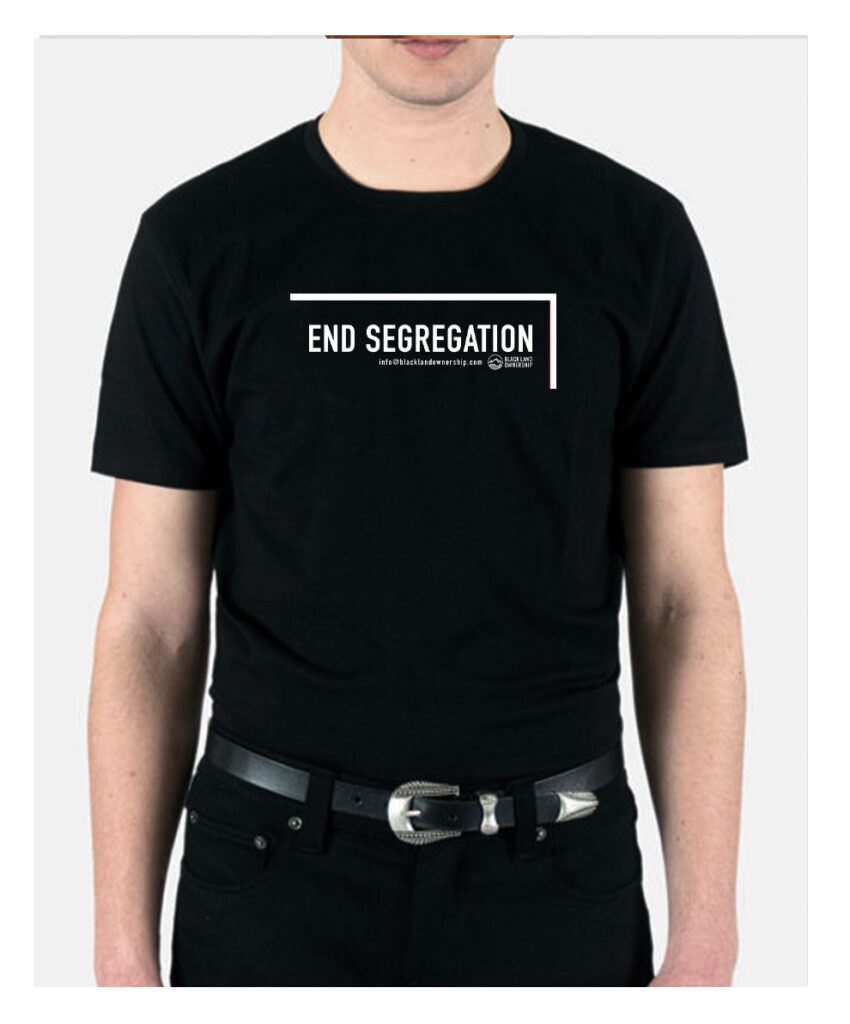END SEGREGATION CAMPAIGN
WHY DO ALL OF THE BLACK FOLKS LIVE TOGETHER?
HISTORY & RESEARCH
96% of privately owned rural land in the United States is owned by people of European descent.
Black folks own less than 1% of rural land in the United States. How and why has this happened?
One could analyze socio-economic and political factors that have been at play in the Black community using the following:
- Black folks want to live among each other.
- Humans are naturally tribal and don’t want to integrate.
- Owning land requires a particular understanding and/or education that has been historically difficult for Black folks to attain.
- Black folks moved to cities following industry and jobs and it wouldn’t make sense for them to buy rural land.
- Credit scores, financial literacy deficiencies, etc.
I pose a question: during the “Great Migration”, why would so many Black folks, skilled and trained in agriculture, move to industrial cities up North?
I posit that the most influential mechanism has been the restrictive racial covenant. Although they have not been enforceable since the Fair Housing Act was passed in 1968, the treatment of Black folks as chattel property until emancipation, the anti-Black property ownership practices that took place post-civil war/reconstruction, and the subsequent 50 years of restrictive covenants enforced by the federal government have carved out a path that self perpetuates.
49 out of 50 states implemented restrictive covenants against Black folks. Hawaii was the only state that did not. By the time they were admitted into the US, covenants could no longer be established (but were still enforceable). There has been no compensation, restitution, or restorative action offered to affected communities – only an acknowledgment of historical injustice.
“The first restrictive covenant to restrict the sale of a property on the basis of race or ethnicity appeared in Brookline, MA, in 1843, where deeds from the Linden Place subdivision included a clause stating that the residences could not be sold to ‘any Negro or native of Ireland'” (McGruder, 2015). The pace of deed restrictions accelerated rapidly through the 1910s and 1920s. A 1926 Supreme Court decision may have accelerated the spread of racial covenants throughout the country. In Corrigan v. Buckley, the Supreme Court declined to hear the case, allowing an earlier ruling against the defendant, Irene Corrigan, to stand. Corrigan had sought to sell her covenant property to an African-American woman. The Court argued that, while states could not engage in racial zoning, nothing prohibited private individuals from agreeing not to sell their homes to people of designated races, ethnicities, or nationalities (paraphrased from Brooks and Rose, 2013).
What we have found is that not only did private citizens engage in the practice of restrictive covenant use, but entire towns, cities, and counties engaged in the implementation of racially restrictive covenants.
The Role of Municipalities (Federal, State, and Local)
- Zoning
- Inheritance/probate adjudication
- Sundown towns enforced by political officials or law enforcement
- State capitals, court systems, and legislative institutions that enforced or advocated for racially restrictive covenants
- Lack of eligibility for programs in areas Black Folks were zoned to live in
- (USDA, Homesteading Act, historic preservation, etc.)
The Role of Private industry
Banks
- Redlining
- Unfavorable or prohibitive loan rates
- Fewer loans given/loan refusal
- Predatory lending
- Collusion with other exploitative industries (insurance and title companies)
Developers
- Not building for Black folks
- Not selling to Black folks
- Unfavorable conditions for Black folks
- Lobbying for restrictive zoning
Others
- Insurance companies: Higher rates, not offering plans, and predatory practices
- Title Companies: Used as a tool to segregate and dispossess
- Private lenders: Used predatory practices and collusion with other bad actors
- Trade groups: Enforcement of racist policy on national levels as protocol
The Role of Private citizens
- Individuals
- Neighbors or groups of friends
- Neighborhoods/housing associations/organized groups
- Complexes and subdivisions/tenant groups/selection processes
- Entire municipal areas controlled by powerful families
This led to Black folks inhabiting limited spaces predetermined by non-community members, in limited proximity to material resources, employment, education, healthcare, transportation, business opportunities/commercial activity, and freedom of mobility — as well as the frequency of disrepair, isolation, lower property rates, prohibition from relocation, and the overall depreciation of home values and assessments.
The people in the isolated/segregated neighborhoods cannot move to the other parts of the city, so the asset that they own can’t be leveraged unless they move out of town. How does that affect community and generational wealth?
This history is directly correlated to contemporary social issues.
Urban Renewal & Gentrification
In the age of build, build, and build, which has created increasing density in many cities across the country you find the following:
In some older and more historic cities, the only areas with margins/price points or room for major financial gain and growth are Black neighborhoods that have not ballooned. Some of these neighborhoods have been allowed to fall into disrepair, decay, and blight, while other Black communities (although isolated) have remained well maintained over the years. In either case, the consequence is “urban renewal”, revitalization programs, and economic empowerment zones that erase the only areas where Black culture has been present in the municipality.
If it can be concluded that a particular municipality did not allow Black folks in a town/city or certain parts of that town or city—what is the responsibility to the community now and how is justice restored?
What can be done now?
- Have private citizens research the history of titles or deeds and advocate within their local municipality to have racially restrictive language removed. If the federal government rolls back certain federal protections — there is nothing in place to ensure these types of laws won’t be enacted again.
- Municipalities, in concert with citizens and title companies, work to help get racially restrictive language removed from documents.
- Change eligibility requirements for historical sites/preservation—use these new categorizations as a tool in Black neighborhoods in danger of erasure.
- Encourage developers to recognize municipal involvement in the history of segregation and have a more direct discussion about what can be done.
- Be active in combating the continuation of these travesties.




